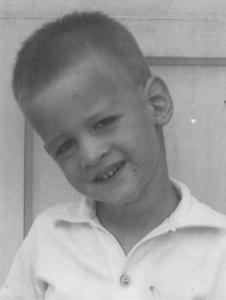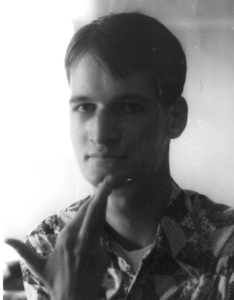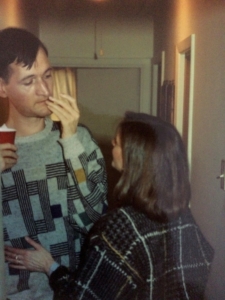Part One: For Jud, Chris, and Millions of People With Disabilities – a Bill 70 Years in the Making Has Arrived
By: Marty Ford, Senior Advisor, The Arc
The Arc of the United States was founded over 70 years ago by families like mine who wanted their family members with intellectual and developmental disabilities included in every aspect of life in their homes and communities. Congress has finally proposed a bill, the Home and Community-Based Services Access Act (HAA), that would provide the resources to turn this foundational goal into a reality and ensure that home and community-based services (HCBS) are there to help ALL people with disabilities live their lives in their communities, with their friends and family.
The fuel for change is always the personal experience. In the first of a two-part blog series, Marty Ford, Senior Advisor at The Arc, shares her perspective about the journey to this moment.
Marty: For me, making community life a reality has been a life-long goal. I was three years old in 1956 when my brother Jud was born with profound IDD, including autism, into a large family. Little was known at the time about how to serve someone with his level of service needs. Even though my mother was a practicing pediatrician, my parents, as well as others at the time, were learning through personal experience and they were determined that Jud would be part of our family and community life.
 There were no supports available outside of the public schools and the schools were not prepared to serve children with high levels of need. When my brother was kicked out of school at a very young age (before the federal law ensuring a right to education) for his disability-related behaviors, he had nowhere to go except home all day with a very loving caregiver. He missed the routines and rhythms of school and had a hard time staying home while everyone else went to work or school daily. He waited all day for the staggered returns of kids and parents, dinner, and then his beloved ride to the drugstore for a Coke and a long drive listening to rock and roll and beach music on the radio. Jud also had daily trips to the Post Office with our Dad to pick up the mail for his business, trips to the barbershop, church on Sundays, other local gathering places, and a house full of our friends and exchange students who lived with us at various times. He loved all the interaction and was known all over town.
There were no supports available outside of the public schools and the schools were not prepared to serve children with high levels of need. When my brother was kicked out of school at a very young age (before the federal law ensuring a right to education) for his disability-related behaviors, he had nowhere to go except home all day with a very loving caregiver. He missed the routines and rhythms of school and had a hard time staying home while everyone else went to work or school daily. He waited all day for the staggered returns of kids and parents, dinner, and then his beloved ride to the drugstore for a Coke and a long drive listening to rock and roll and beach music on the radio. Jud also had daily trips to the Post Office with our Dad to pick up the mail for his business, trips to the barbershop, church on Sundays, other local gathering places, and a house full of our friends and exchange students who lived with us at various times. He loved all the interaction and was known all over town.
 Sadly, as each of his older siblings began to leave home for college, military service, or otherwise, Jud’s physical size and his inability to control his frustrations and emotions became dangerous for our aging parents. After much searching and trying many approaches, the only available service for someone with his needs was the state institutional system. This was devastating for Jud, for our whole family, and for the many friends who had known him over the years. Jud suffered greatly from the travel distance from his family (even though we visited regularly), home and hometown, friends, and routines. And while there were some wonderful staff who supported him in his new location, we were horrified to learn that he also suffered some terrible abuses– the kinds of things that can be hidden when people who are unable to communicate or be understood cannot tell others what is happening to them. My father found that Jud had been burned with cigarettes and that other men in his unit had been more extensively burned. In other incidents, men in his unit died after being subjected to dangerous restraint methods. He also suffered from toxic environmental conditions, including asbestos and sewage leakage. As a family, we were determined to end these abuses.
Sadly, as each of his older siblings began to leave home for college, military service, or otherwise, Jud’s physical size and his inability to control his frustrations and emotions became dangerous for our aging parents. After much searching and trying many approaches, the only available service for someone with his needs was the state institutional system. This was devastating for Jud, for our whole family, and for the many friends who had known him over the years. Jud suffered greatly from the travel distance from his family (even though we visited regularly), home and hometown, friends, and routines. And while there were some wonderful staff who supported him in his new location, we were horrified to learn that he also suffered some terrible abuses– the kinds of things that can be hidden when people who are unable to communicate or be understood cannot tell others what is happening to them. My father found that Jud had been burned with cigarettes and that other men in his unit had been more extensively burned. In other incidents, men in his unit died after being subjected to dangerous restraint methods. He also suffered from toxic environmental conditions, including asbestos and sewage leakage. As a family, we were determined to end these abuses.
 Jud’s experiences fueled my passion to change the system. I worked in Washington to pass federal legislation to move the Medicaid funding bias away from institutions and to build the community service system, making the community the preferred service setting. My advocacy led me to a career in The Arc’s national public policy office, which I joined in 1984. While our systems have evolved since the 70s through the late 80s when my brother was experiencing so much pain, we still have a long way to go. I am happy to report that Jud was eventually able to leave the state institution and live in a group home about 7 minutes from our widowed mother in his beloved hometown for the last 20+ years of his life. Jud also experienced some serious problems in his group home, but those were able to be discovered and remedied because family were nearby and able to observe how he was doing. For those who understood him, Jud continued his mantra: “Stay at the new house; not gonna keep saying it” throughout those years, lest anyone think he would ever want to go back to the institution.
Jud’s experiences fueled my passion to change the system. I worked in Washington to pass federal legislation to move the Medicaid funding bias away from institutions and to build the community service system, making the community the preferred service setting. My advocacy led me to a career in The Arc’s national public policy office, which I joined in 1984. While our systems have evolved since the 70s through the late 80s when my brother was experiencing so much pain, we still have a long way to go. I am happy to report that Jud was eventually able to leave the state institution and live in a group home about 7 minutes from our widowed mother in his beloved hometown for the last 20+ years of his life. Jud also experienced some serious problems in his group home, but those were able to be discovered and remedied because family were nearby and able to observe how he was doing. For those who understood him, Jud continued his mantra: “Stay at the new house; not gonna keep saying it” throughout those years, lest anyone think he would ever want to go back to the institution.
One of the things I’m most proud of during my nearly 40-year career in disability rights is my work on what was known as the Chafee bill, after Senator John Chafee (R-RI) who was the lead Senate sponsor. In 1983, he proposed sweeping changes to the service system, the kind of shift that families like mine were fighting for across the country. As is typical in major change legislation, the Chafee bill did not pass as originally written, but the bill’s groundswell of grassroots demands for progress, and the resulting recognition at the state level that change was coming, began the hard work in the states for the evolution toward better provision of services. There were so many heroes in this effort: state directors of DD services who pushed their governors and legislatures, parents and families who rallied in support, self-advocates who began to speak on behalf of their fellow friends in institutions, chapters of The Arc and other plaintiffs who took states to court, chapters of The Arc which forced state changes, Members of Congress of both parties in both the House and Senate who supported real reform for the sake of the people affected, and many more.
In the end of the Chafee bill efforts, the Community Supported Living Amendments (CSLA) option was enacted to provide funds to 8 states over 5 years to create new Medicaid community services – 36 states applied for the funds, indicating the pent-up desire at the state level for new approaches. These were new funds available in addition to the Home and Community-Based Waiver program. The CSLA option helped to alter the way the HCBS waiver and long term supports and services for people with IDD were later implemented. There have been many bills which have passed over the years, refining and improving what is available. It was the Chafee bill that laid the groundwork, and thinking back to this bipartisan effort gives me hope that this country can do great things when we work together to improve lives.
The work must continue and advocates should not be discouraged by set-backs. We are much farther ahead than we were when my brother Jud arrived on the scene in 1956, but we still have work to do to make our communities welcoming and ready for each person, regardless of need.
You can make a difference. Tell your members of Congress why this bill is so critical to your or your family member’s future.








